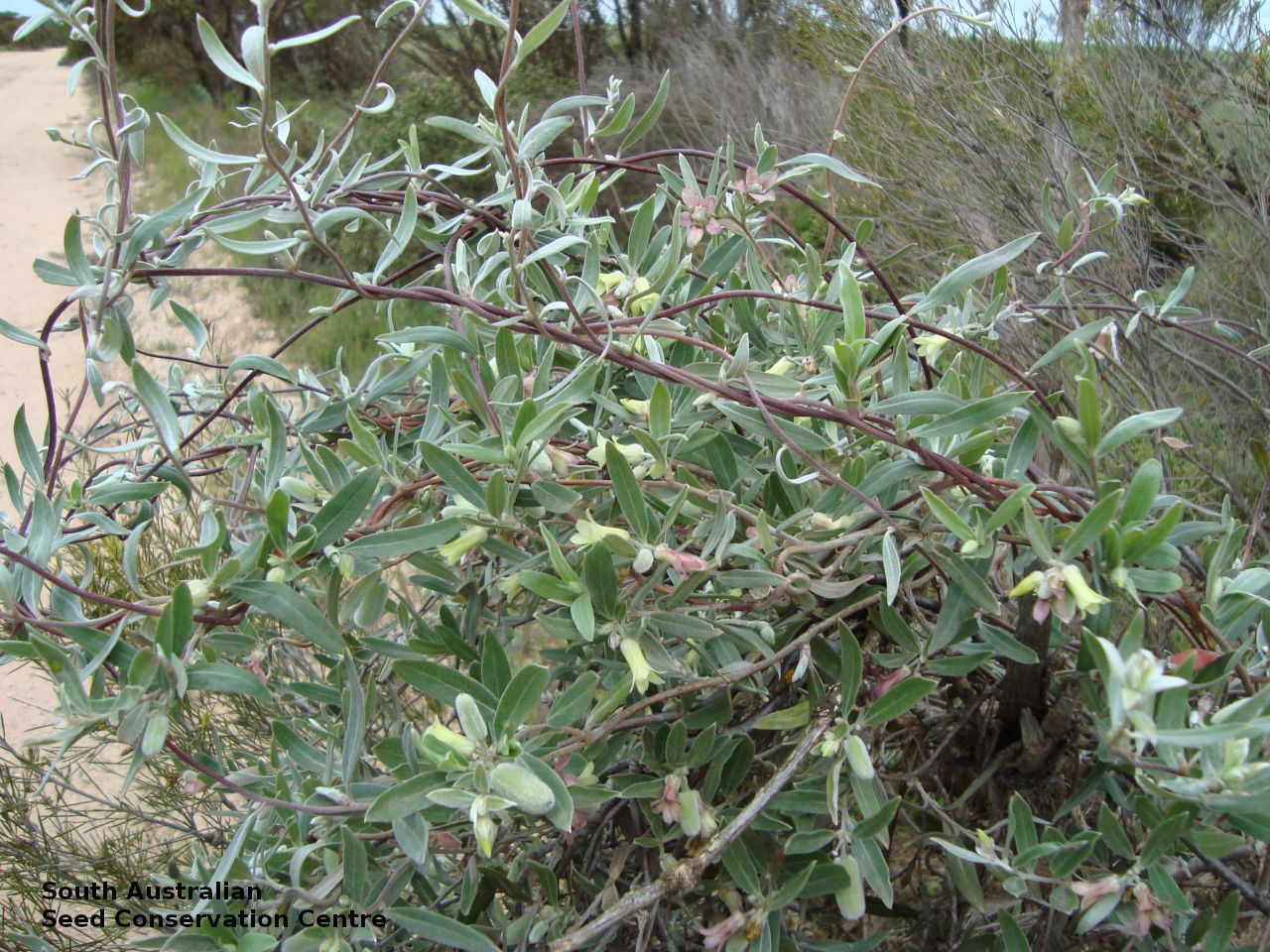
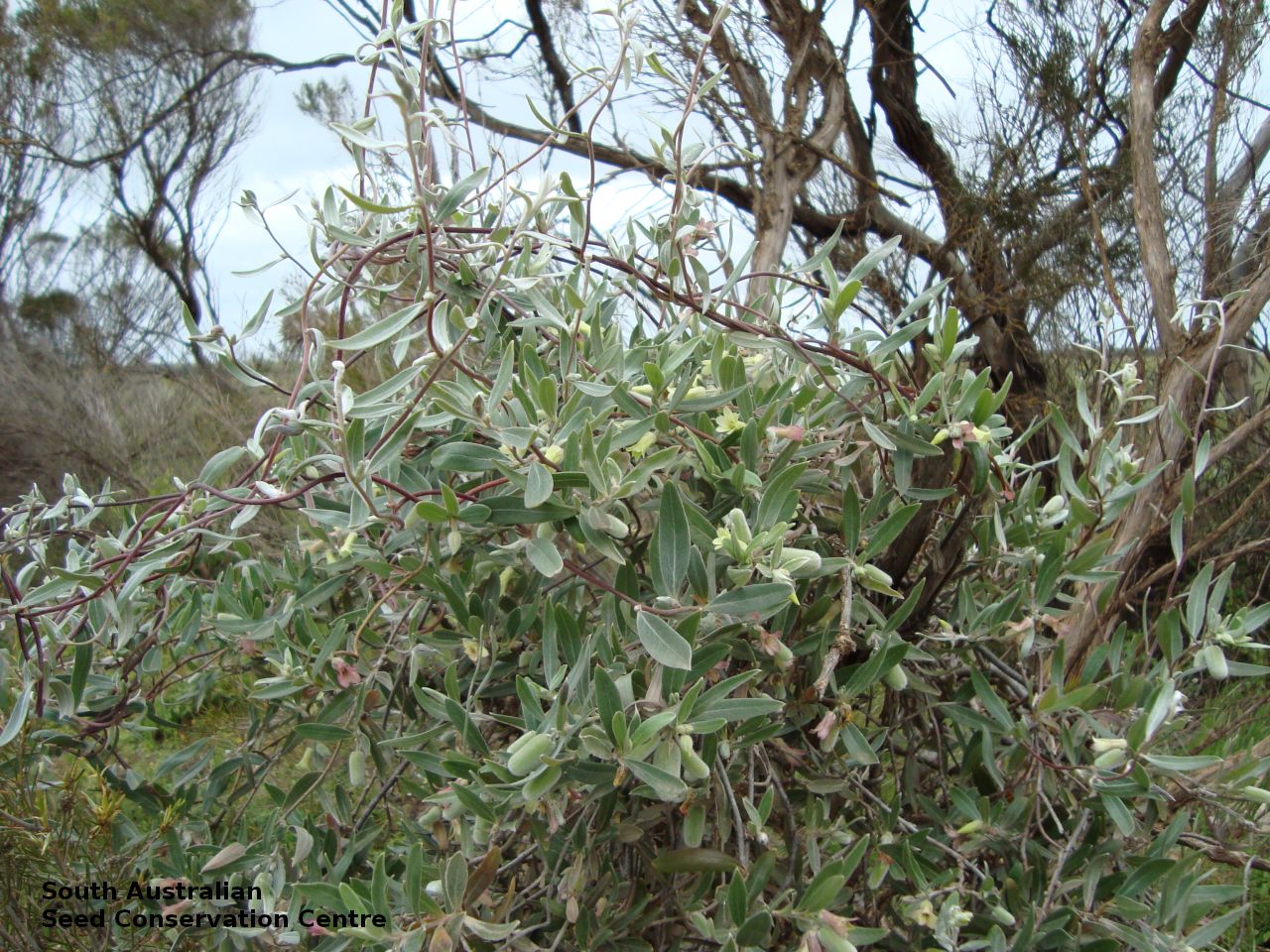
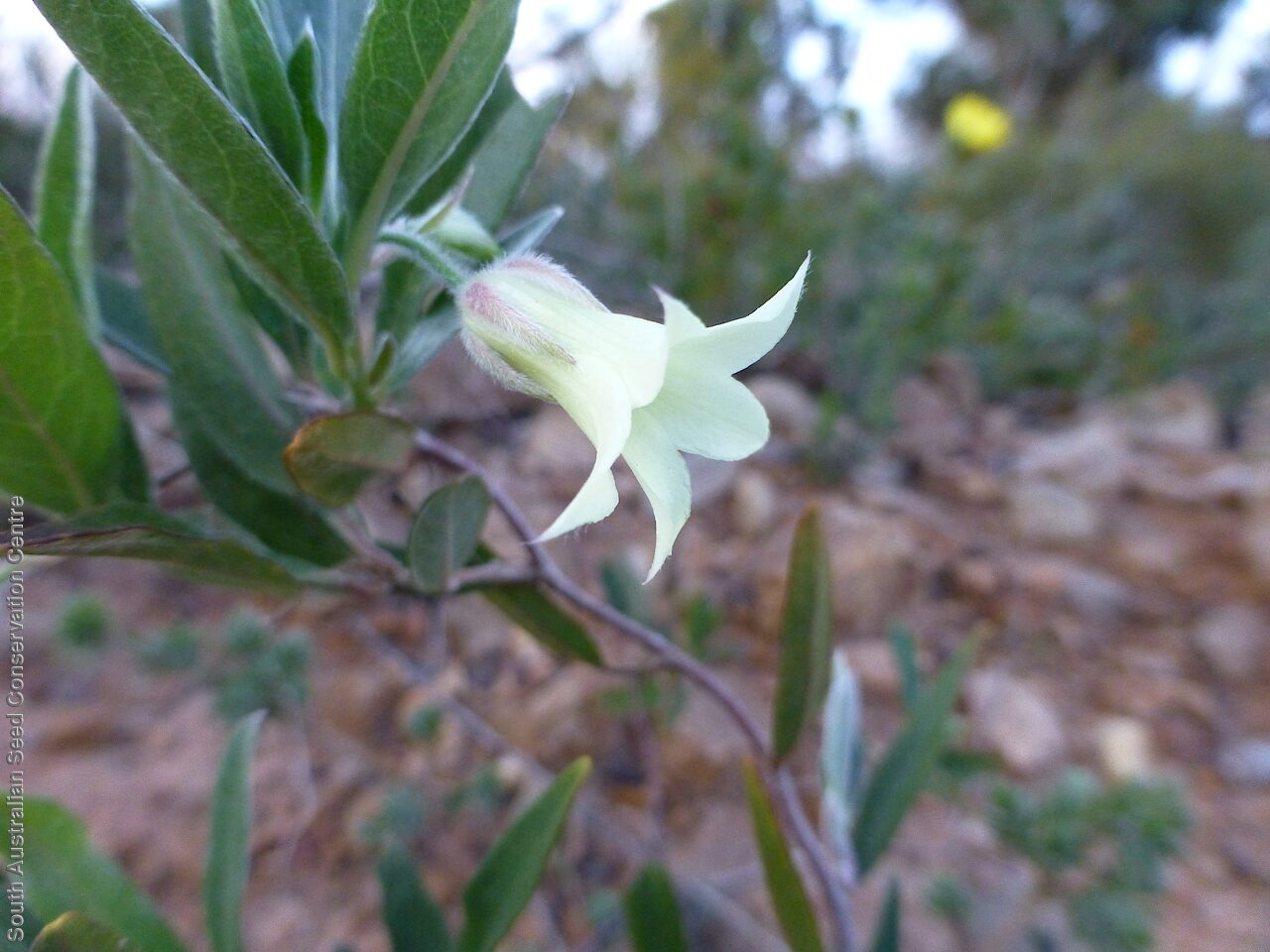
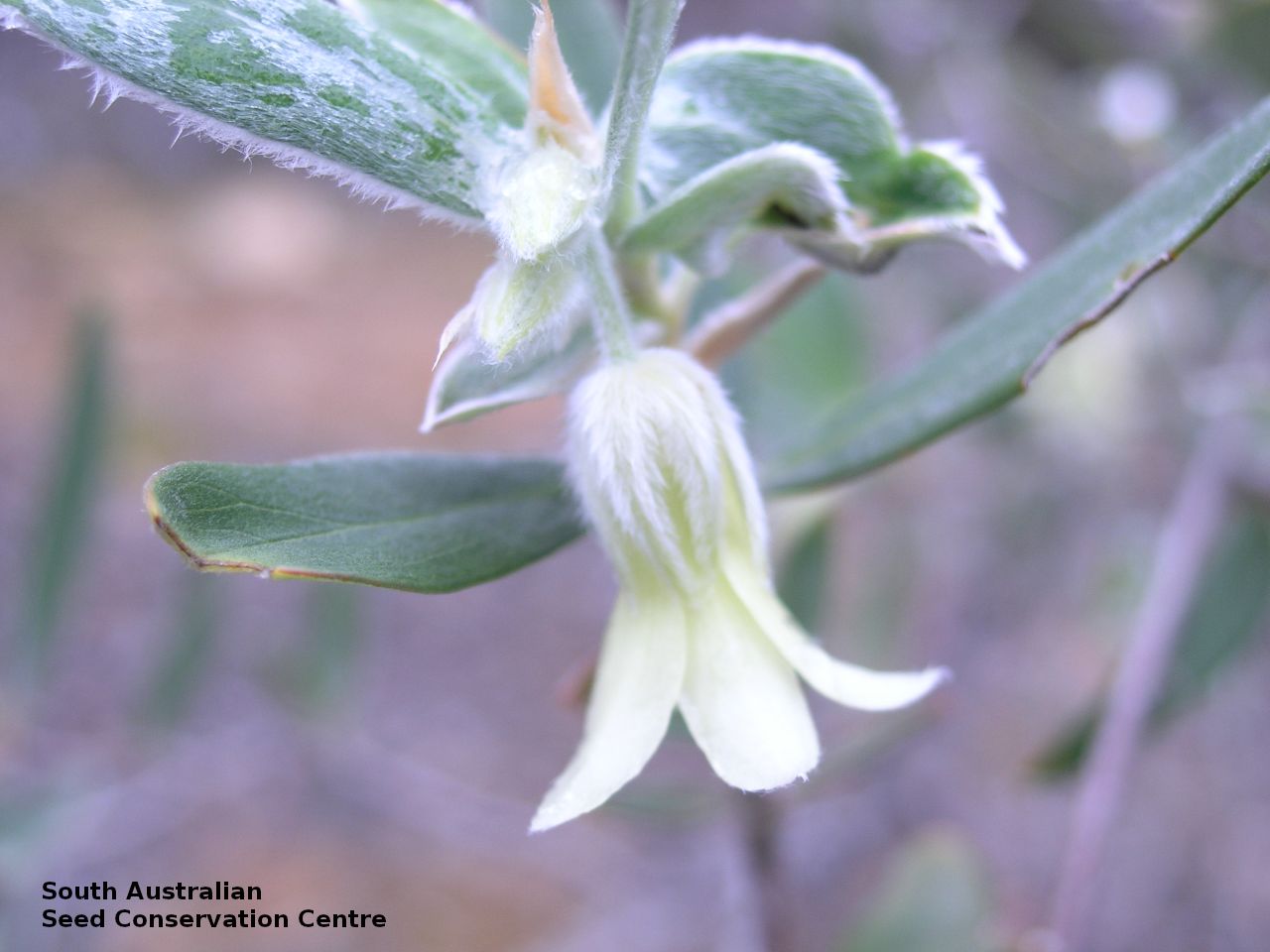
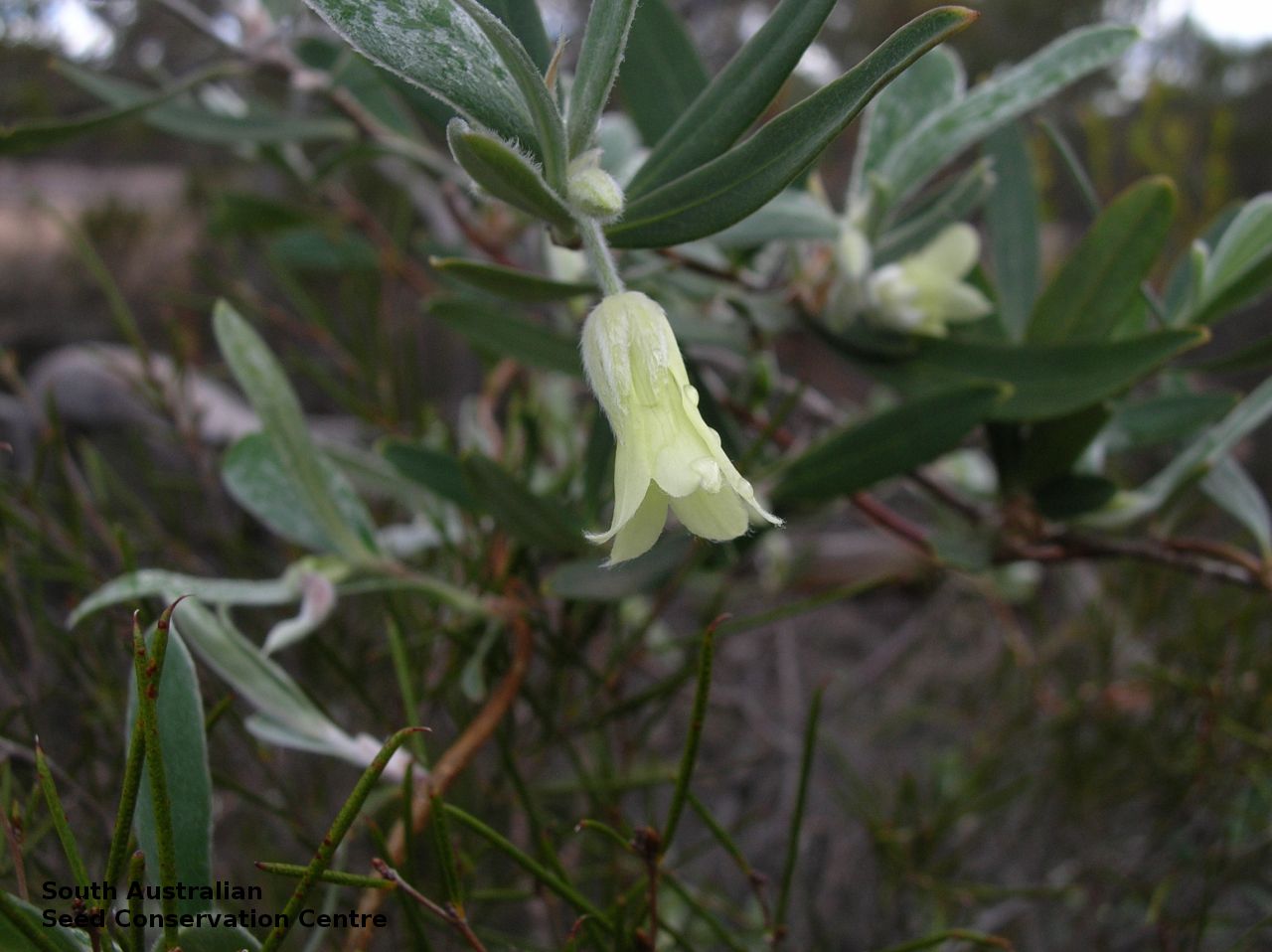
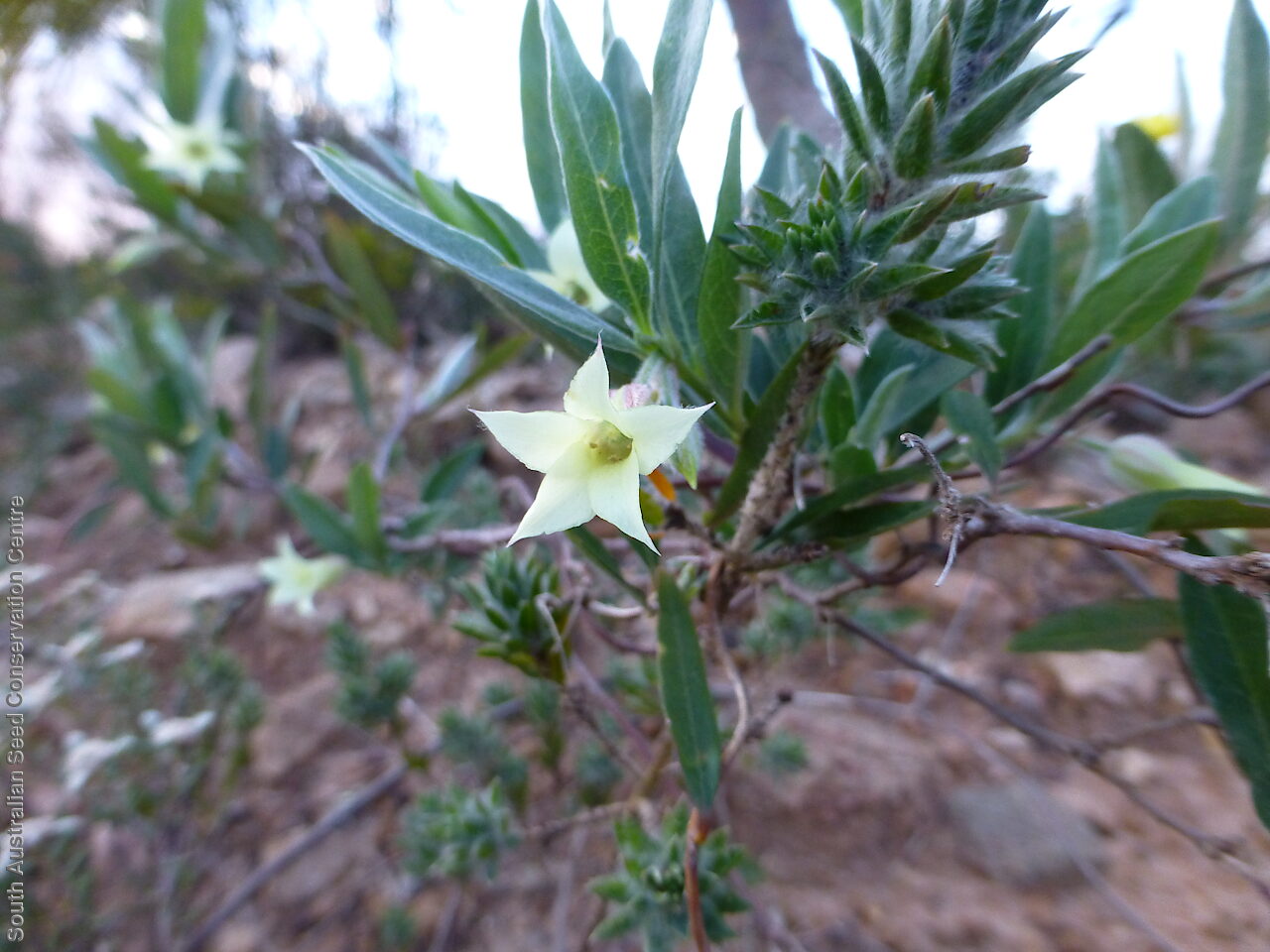
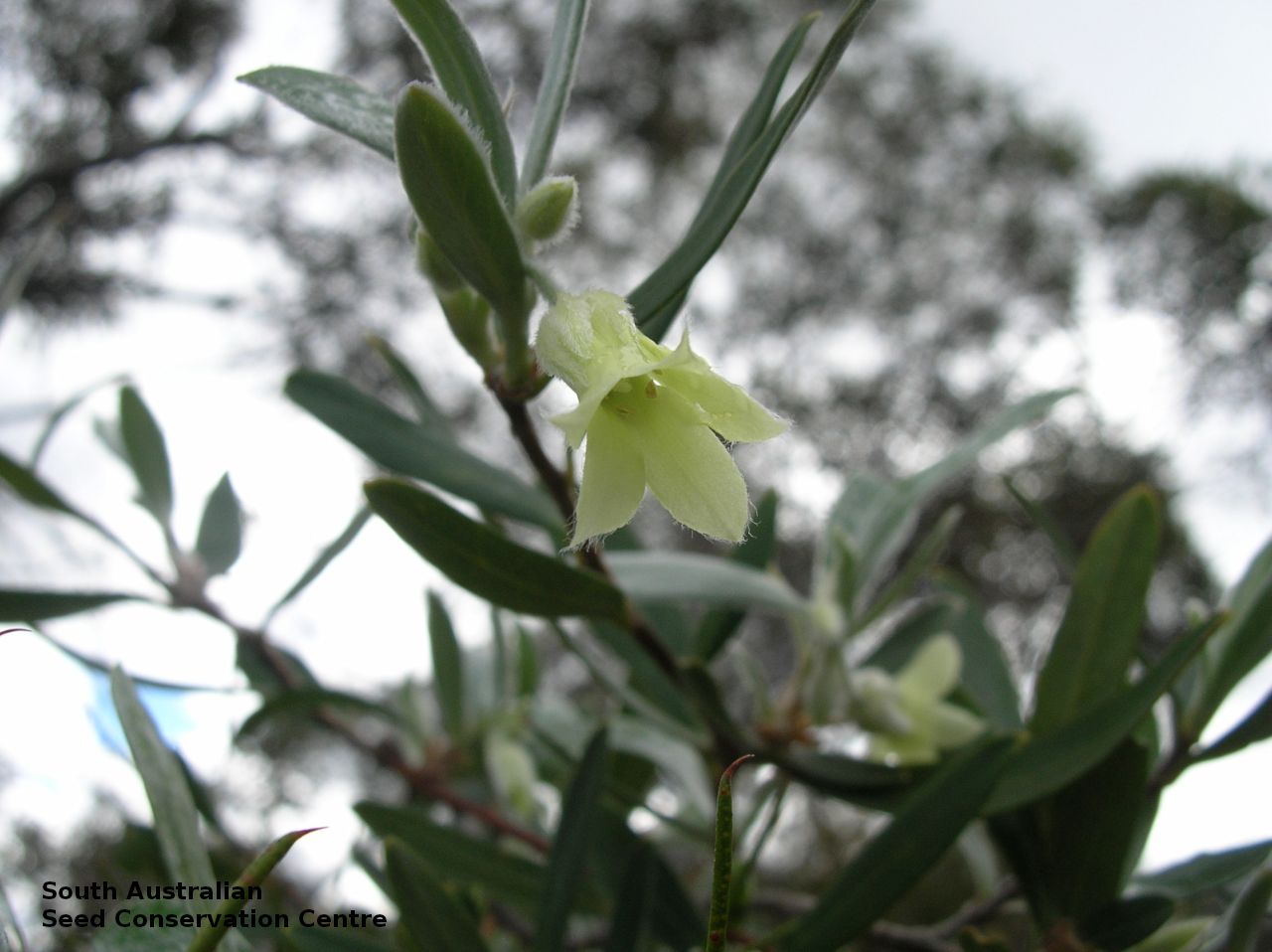
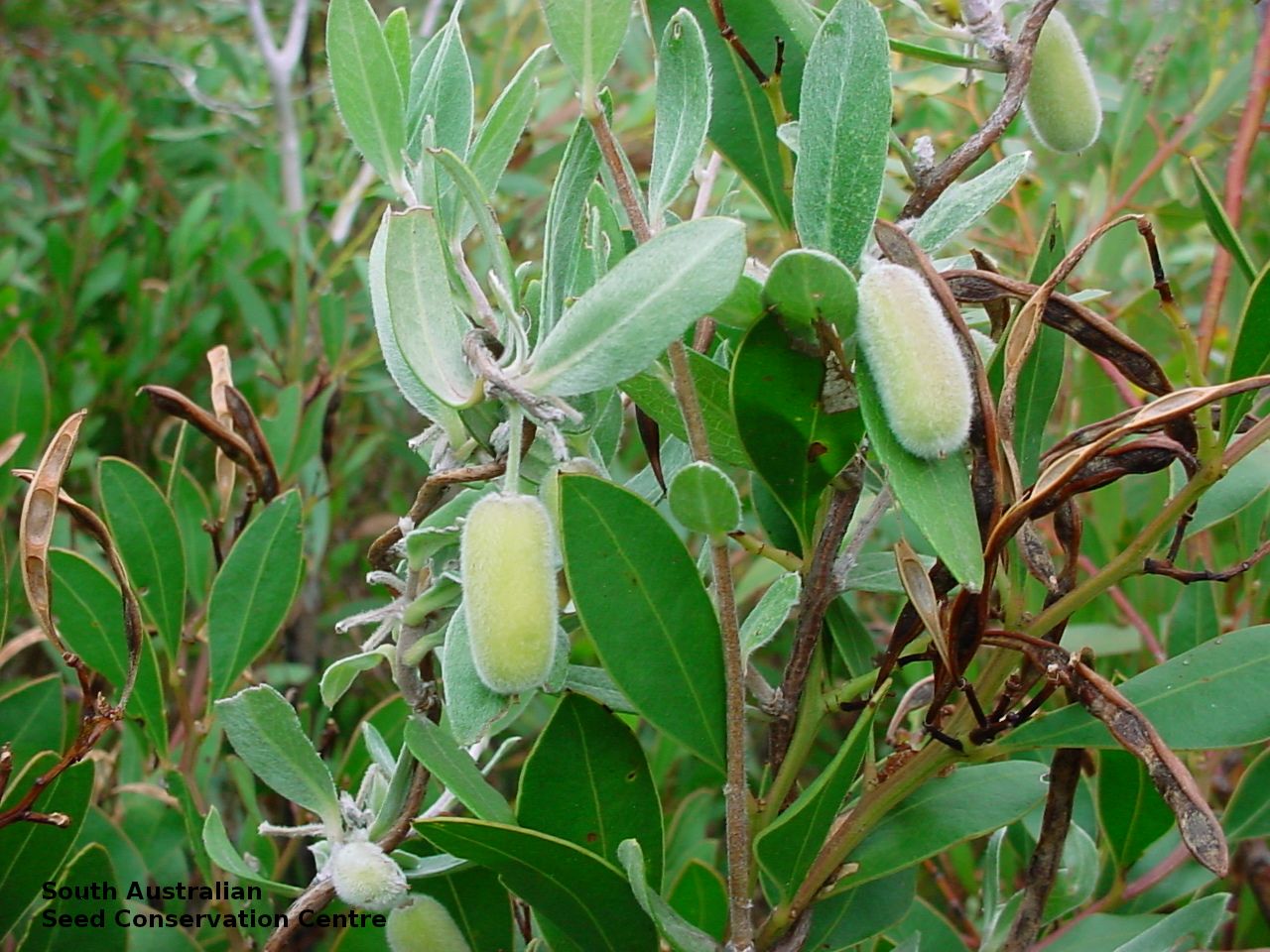
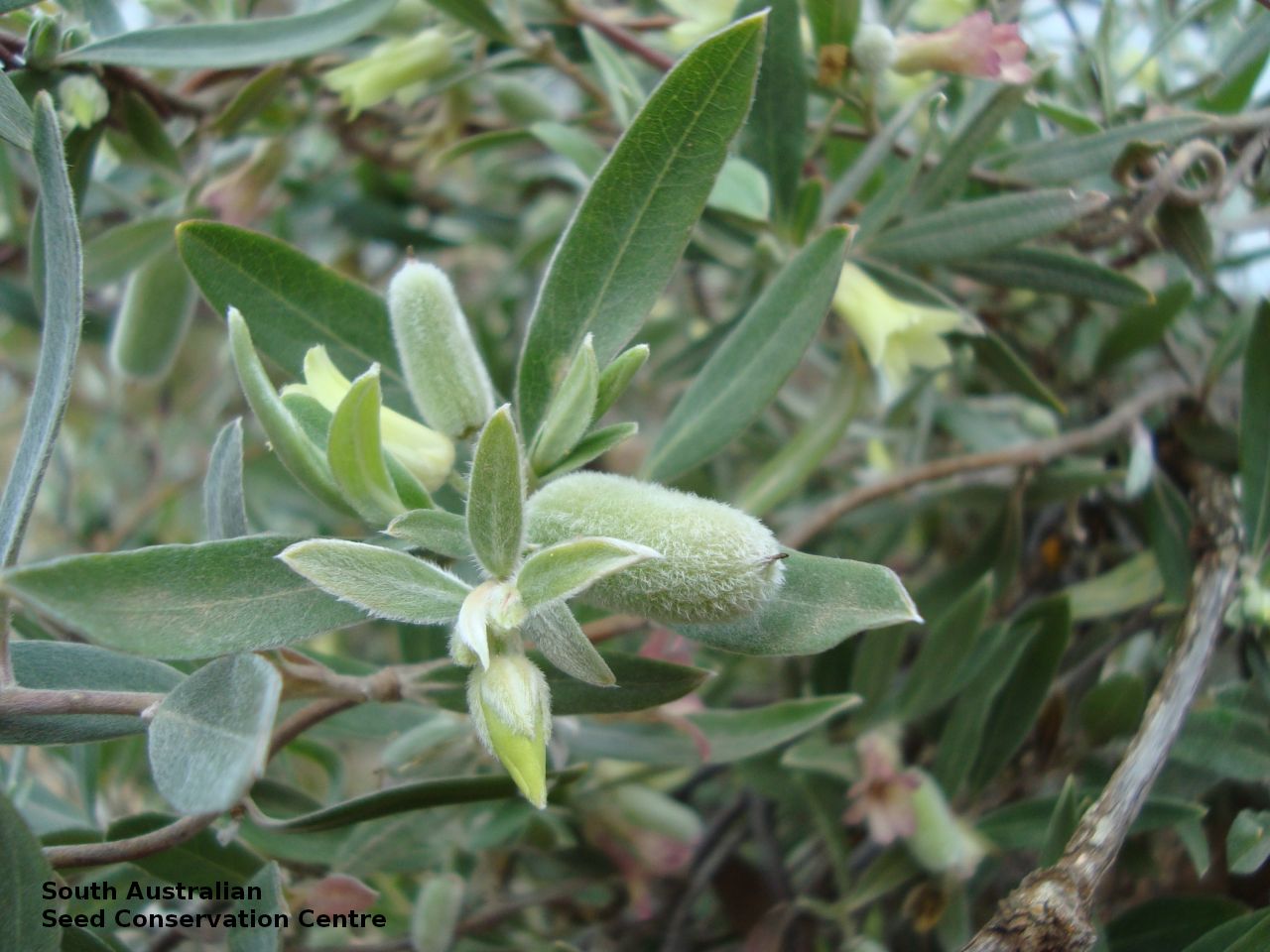
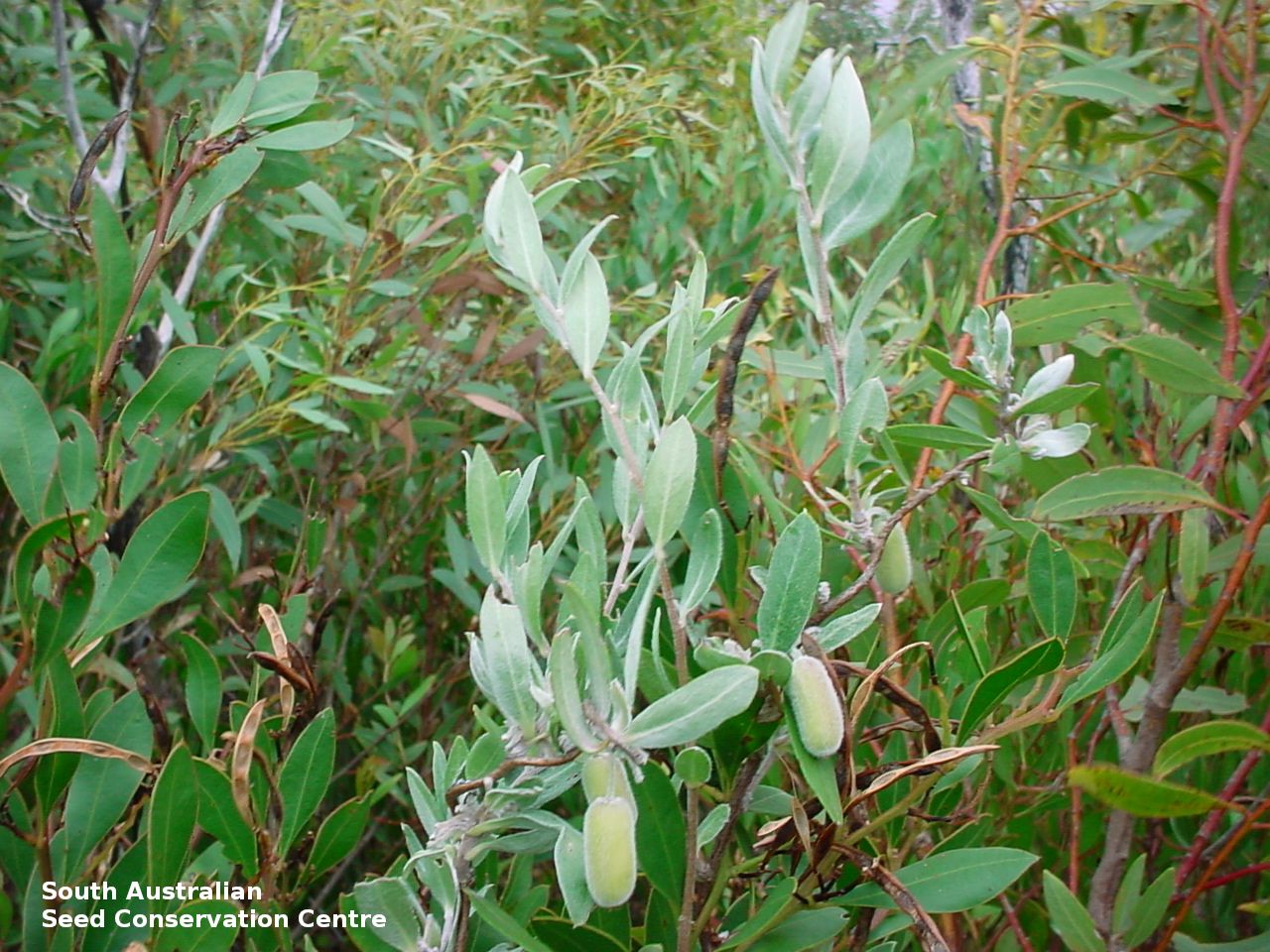
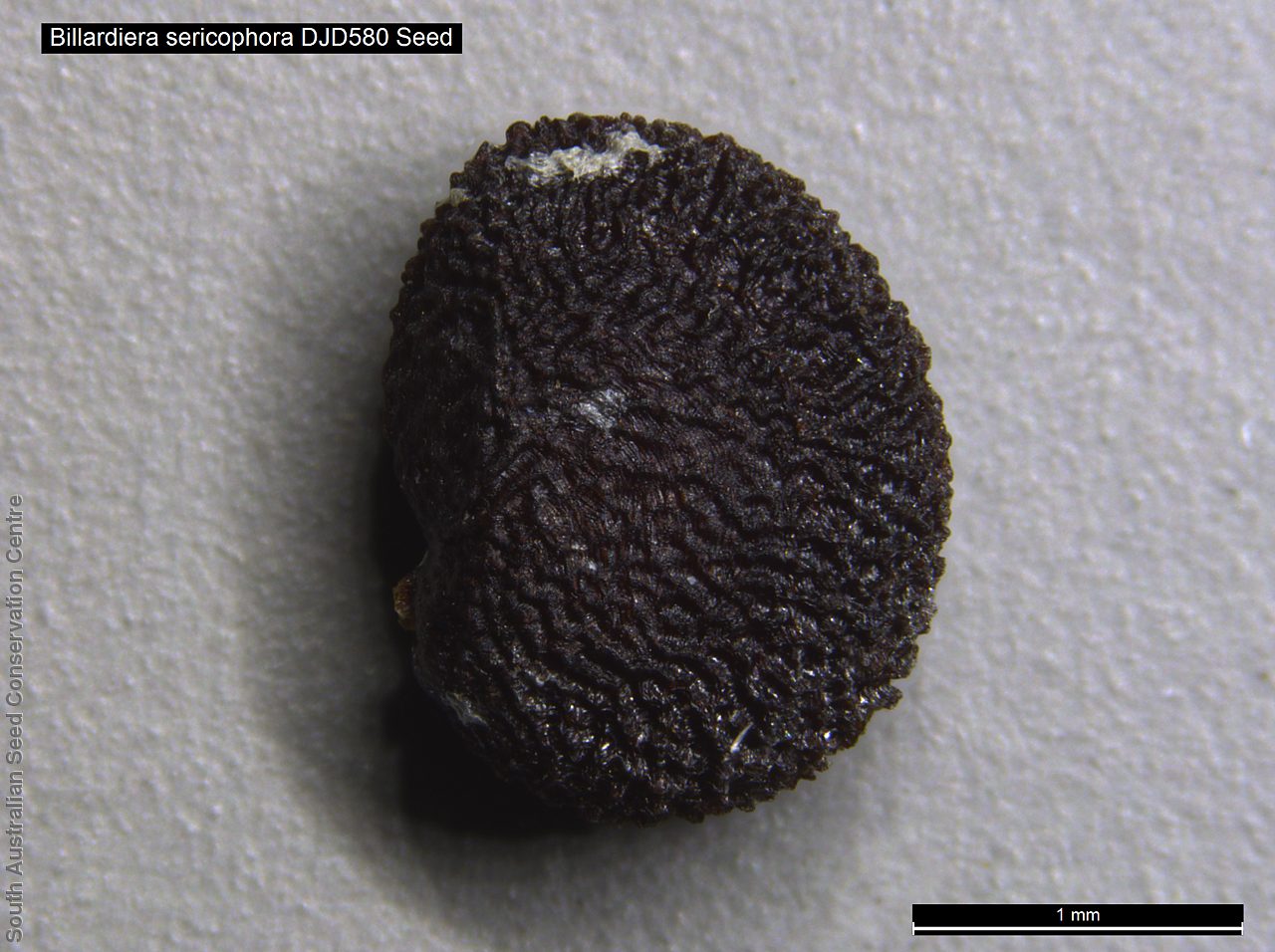
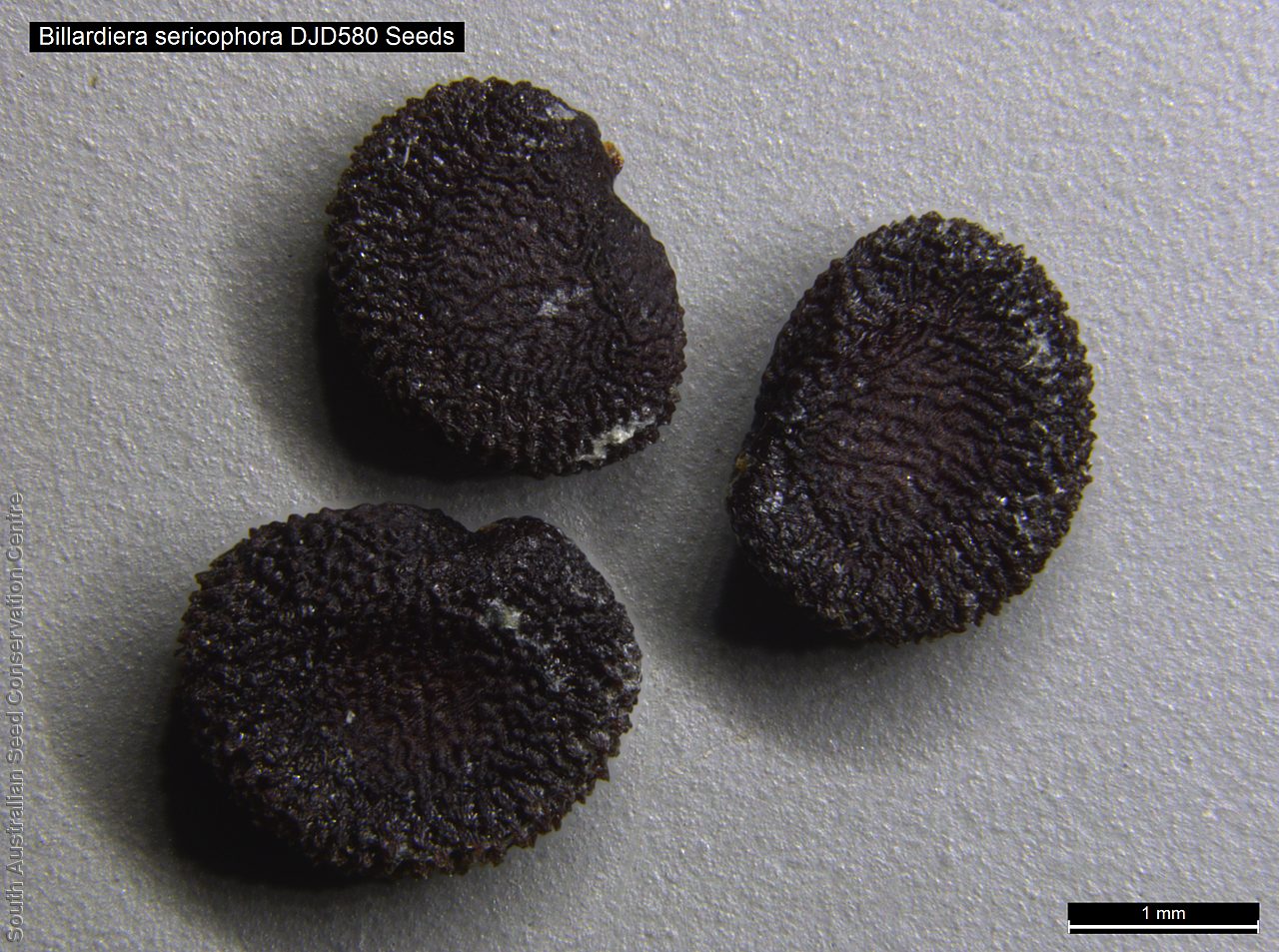
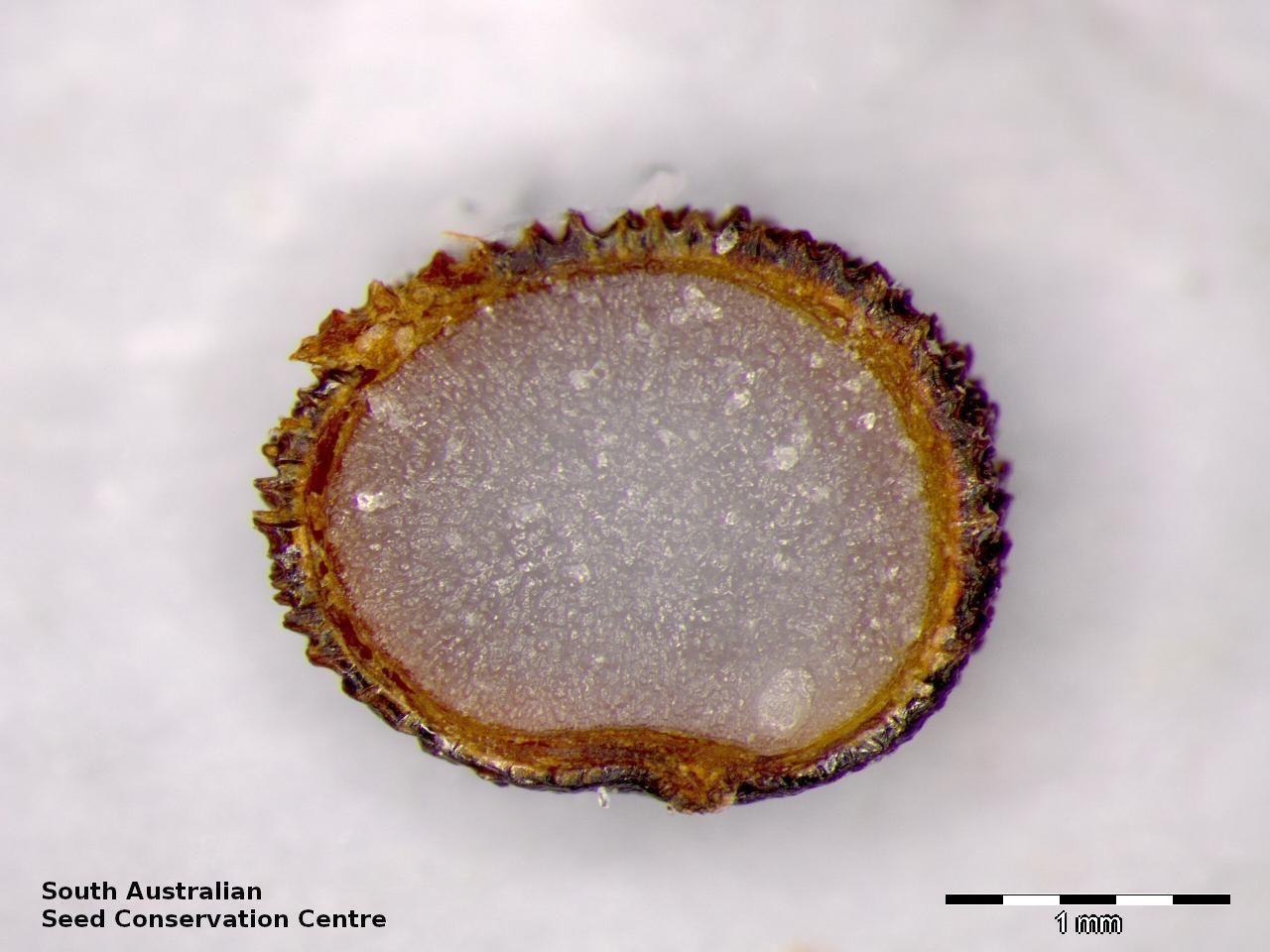
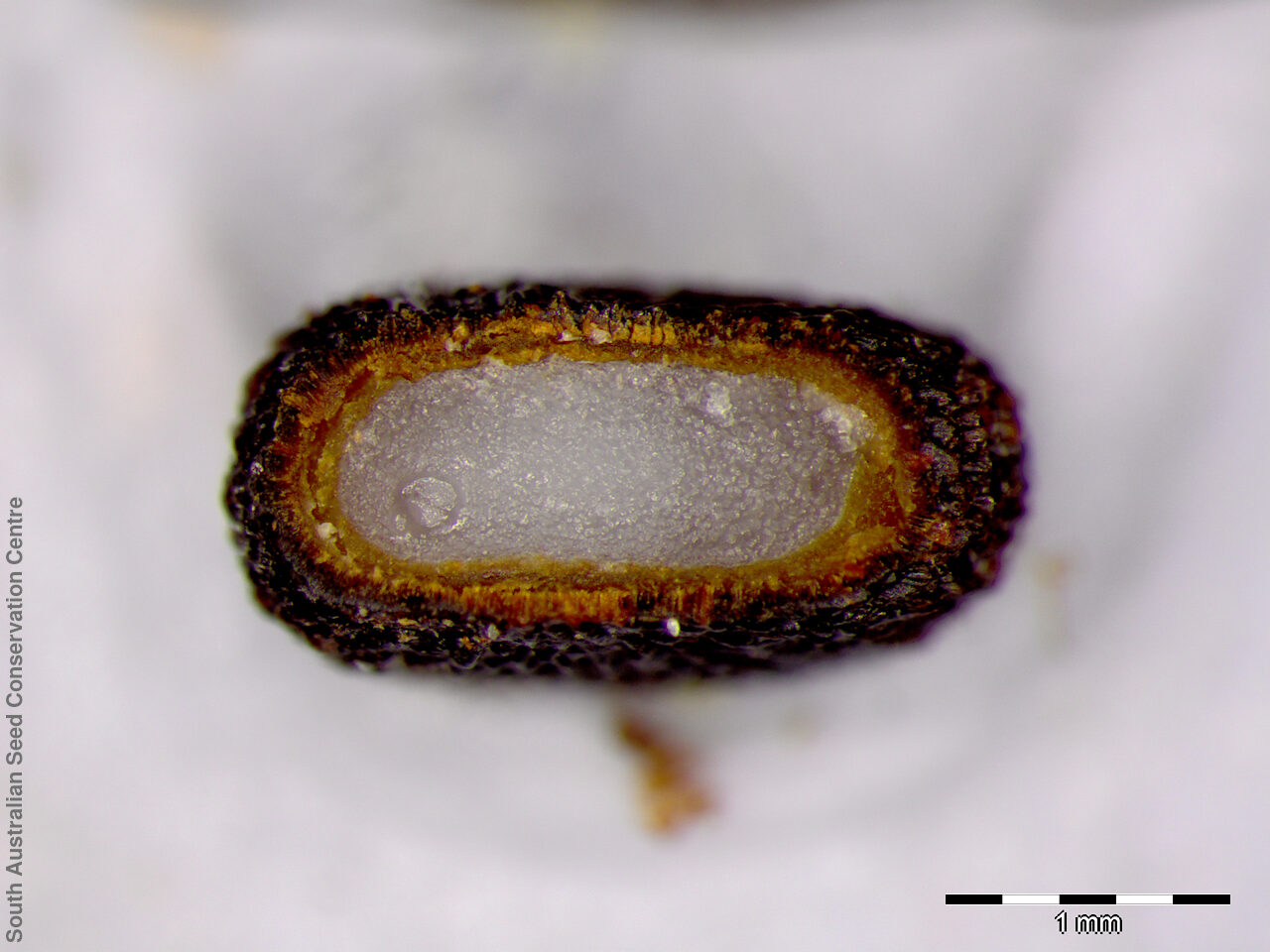

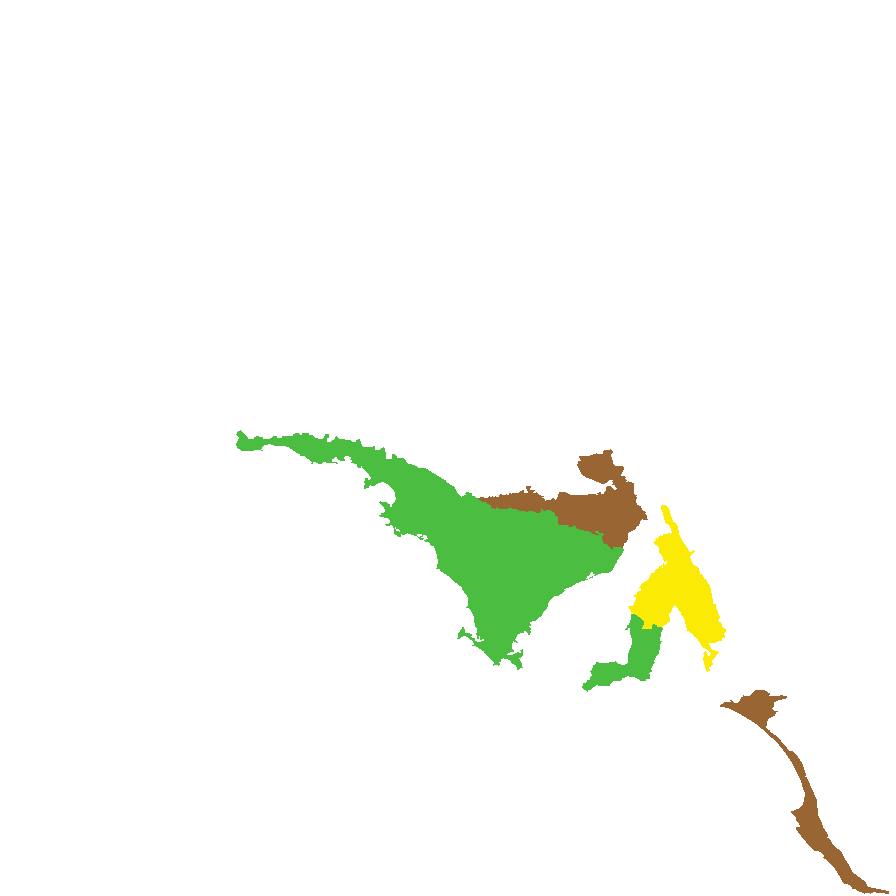
Botanical art
Prior names
Billardiera sericophora var. megaphylla
Billardiera cymosa var. sericophora
Etymology
Billardiera named after Jacques Julien de La Billardiere (1755-1834), a 19th century French botanist who visited Western Australia and Tasmania with D'Entrecasteaux expedition and named many new plant species. Sericophora from the Latin 'sericeus' meaning silky and 'floris' meaning flower.
Distribution and status
Endemic to South Australia. Found scattered across Yorke Peninsula and Eyre Peninsula. Native. Rare in South Australia.
Herbarium regions: Eyre Peninsula, Yorke Peninsula
NRM regions: Eyre Peninsula, Northern and Yorke
AVH map: SA distribution map (external link)
Plant description
Climbing perennial shrub with copper coloured stems covered in fine hairs. Leaves are green, hairless on top and covered in fine hairs on the underside. Flowers are yellow, bell-shaped and covered in white hairs at the base, appearing between August and December. Fruits are a cylindrical berry covered in hairs, green and hard when immature and soft and dark purple when ripe. Seeds are dark brown or black flat reniform seeds about 2mm long and covered in grooves. Seed embryo type is linear underdeveloped.
Seed collection and propagation
Collect seeds between November and January. Pick mature fruits by hand, those that are soft or have dark brown/black seeds inside. Clean ripe fruits as soon as possible as it will go hard if left to dry too long. Rub the fruits in water with your hands to dislodge the seeds from the fruit. Pour the mixture into a sieve to separate the seeds from the flesh. Place the wet seeds in a tray lined with paper and leave to dry for 1 to 2 days. Store the seeds with a desiccant such as dried silica beads or dry rice, in an air tight container in a cool and dry place. From two collections, the seed viability were high, ranging from 85% to 100%. This species has physiological dormancy that need to be overcome for the seed to germinate.
| Location | No. of seeds (weight grams) | Number of plants | Date collected | Collection number Collection location | Date stored | % Viability | Storage temperature |
|---|---|---|---|---|---|---|---|
| BGA MSB | 2,390 (6.24 g) 1,550 (4.05 g) | 12 | 29-Nov-2006 | DJD580 Yorke Peninsula | 1-Aug-2007 | 85% | -18°C |
| BGA | 890 (2.99 g) | 4 | 11-Dec-2008 | TST693 Eyre Peninsula | 20-Jul-2009 | 100% | -18°C |
Number of plants: This is the number of plants from which the seeds were collected.
Collection location: The Herbarium of South Australia's region name.
% Viability: Percentage of filled healthy seeds determined by a cut test or x-ray.